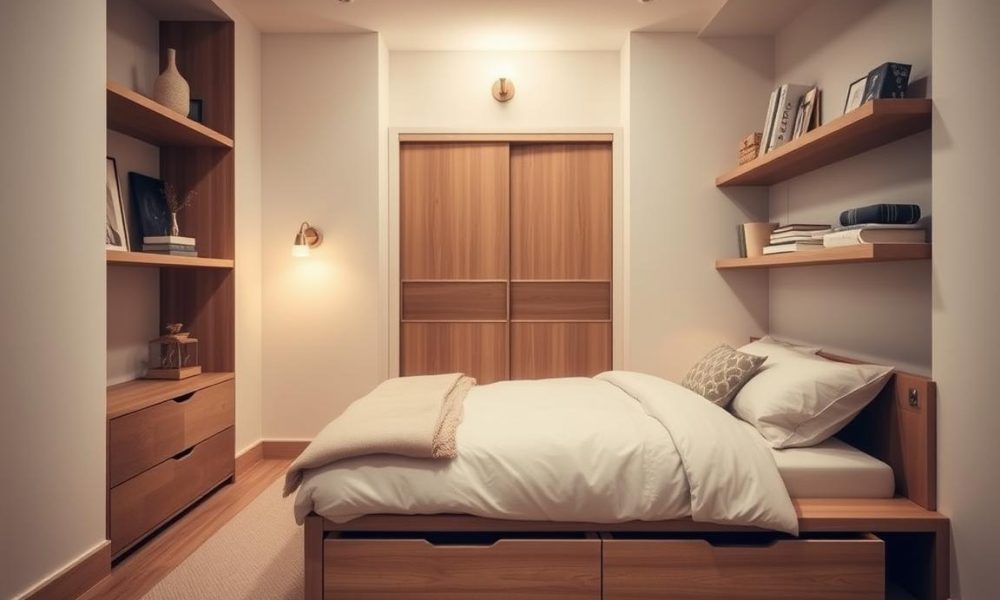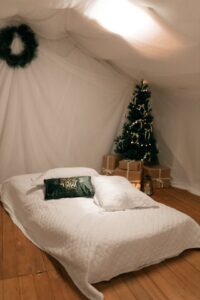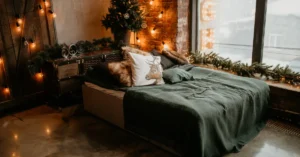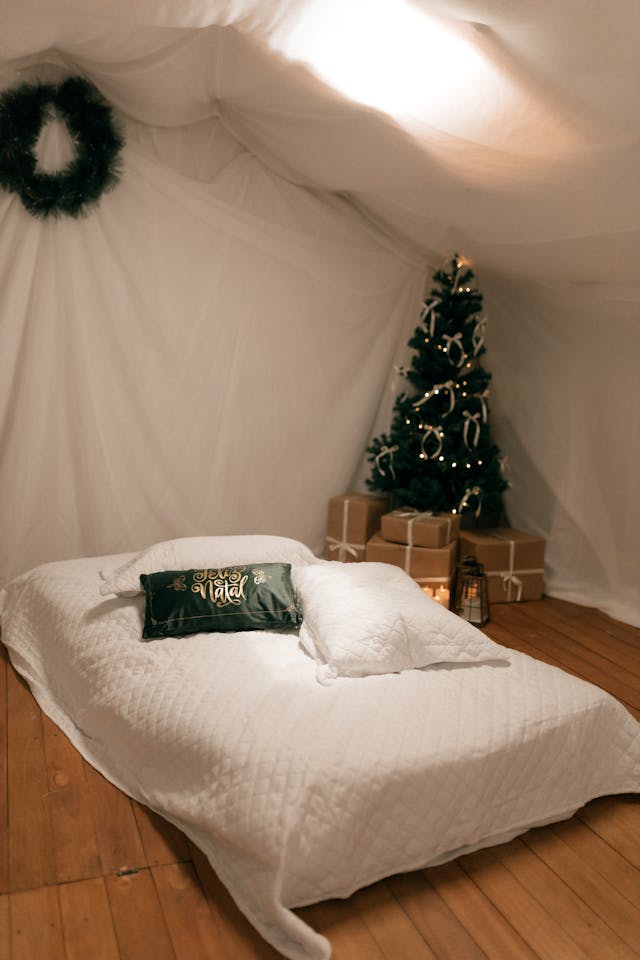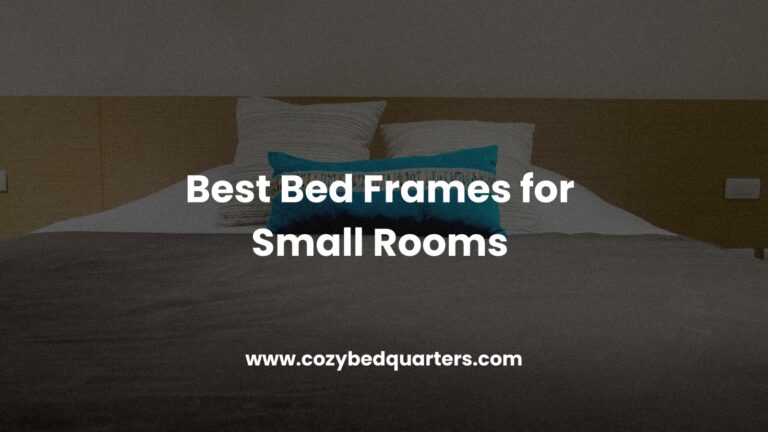Bedroom Furniture Space Saving Ideas that Free Your Floor Fast
Updated: August 2025
Bedroom furniture space saving ideas work best when they clear walking paths and keep surfaces calm. Measure your clearance, pick drawers for daily wear and flexible bins for bedding, and your room will feel bigger without adding bulky cabinets. For a deeper dive, see our bedroom storage hub for layouts, checklists, and buyer’s guides.
Key Takeaways
- Plan storage by access frequency so everyday routines stay easy.
- Use drawers for daily items and flexible bins for bulky bedding.
- Measure under-bed height and wall clearance before you buy anything.
- Mix high-end pieces with budget finds to stretch your budget.
- One change can make a big difference—start with bedroom furniture space saving ideas you can do this week.
Smart under-bed storage that actually works in a small bedroom
Under-bed areas often hide the most useful storage you’re not using. Treat that space like a budgeted closet shelf. Pick the right container for how often you reach in, and keep pathways clear so drawers glide without hitting nightstands.
What to use
- Hard drawers for daily clothes you need fast access to.
- Flexible fabric bins for bulky quilts, comforters, and seasonal items.
- Split-lid or low-profile bins when bed frames sit close to the floor.
Most adults need about seven hours of sleep; smooth nightly routines help you get there. Keep the storage you use most within easy reach so bedtime stays calm instead of cramped (see the Sleep Foundation’s healthy sleep tips).
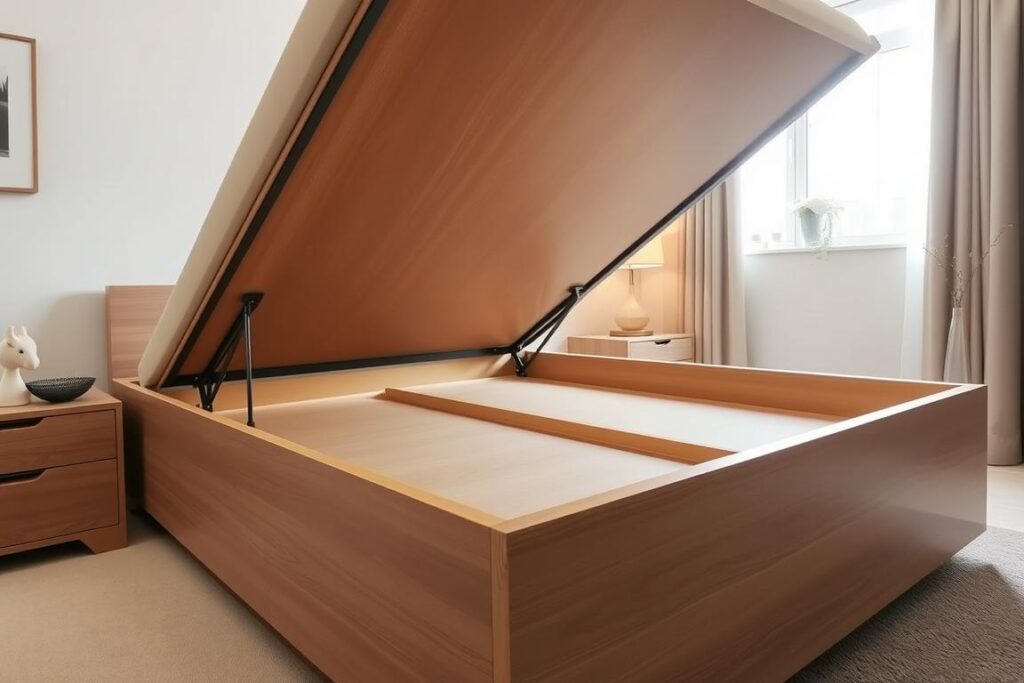
Storage beds that double space without widening the footprint
A storage bed tucks everyday clutter out of sight while keeping your room neat. Choose drawers when you have side clearance; choose a lift-up base when the bed sits close to a wall or large nightstand.
Options to consider
- Built-in drawer beds: deep drawers on each side hold jeans, towels, or spare blankets.
- Drawer modules: add-on units that slide cleanly under a standard frame.
- Lift-up bases: the entire mattress platform raises to reveal a roomy cavity.
Why this helps: these bedroom furniture space saving ideas give you a closet’s worth of capacity without stealing floor area for another dresser. For inspiration on fitting furniture in tight rooms, browse The Spruce’s small bedroom storage ideas.
Hinge-top and lift-up beds for tight clearance
If drawer fronts hit a wall or nightstand, a hinge-top or lift-up model solves it. You keep the bed where it fits best and still gain organized storage.
Use cases
- Linens and pillows: items you access weekly or monthly.
- Seasonal wear: pack in labeled bags so you can grab fast.
- Small rooms: no side clearance needed, which protects your walking lanes.
Tip: test lift strength in-store if possible, and load the platform evenly to protect the frame. Measure ceiling height and lift angle so the top clears lights or trim when open.
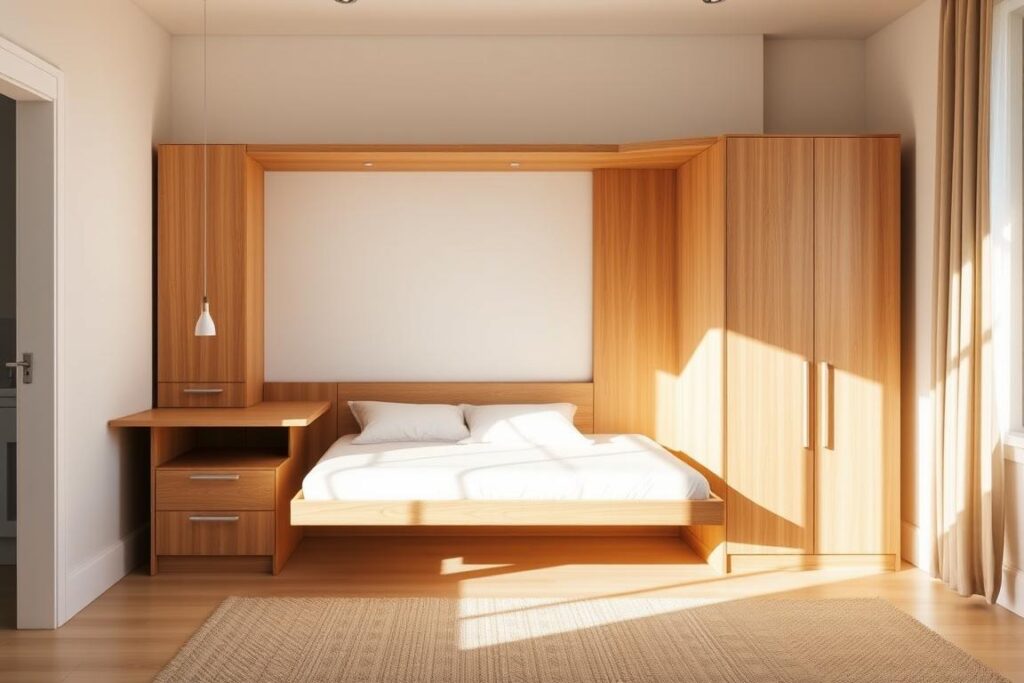
Bedroom furniture space saving ideas you can do this week
Start small and build momentum. These quick wins deliver clear floors and calmer surfaces fast.
- Swap bulky nightstands for floating shelves: free floor area and let side drawers open fully. Try these floating nightstand ideas that keep reach smooth.
- Use flexible bins under the bed: compress bedding and label by season to prevent rummaging.
- Add wall hooks near doors: catch robes and bags so chairs don’t become drop zones.
- Run a cable clip or slim raceway: keep chargers tidy and out of sight.
Simple systems help you reset the room in minutes, which supports consistent sleep habits. See practical routines in Sleep Foundation’s sleep hygiene guide.
Go vertical: shelves, ledges, and over-the-door storage
Going vertical reclaims walls you can reach in seconds. It’s one of the most effective bedroom furniture space saving ideas because it clears low surfaces and protects your walking lanes.
- Wall shelves: choose a slim depth so books don’t jut into pathways. Our guide to wall shelves for small bedrooms shows good depths.
- Picture ledges: display current reads, glasses, and a phone without adding bulk.
- Over-the-door racks: store bags or hats where they’re easy to grab on the way out.
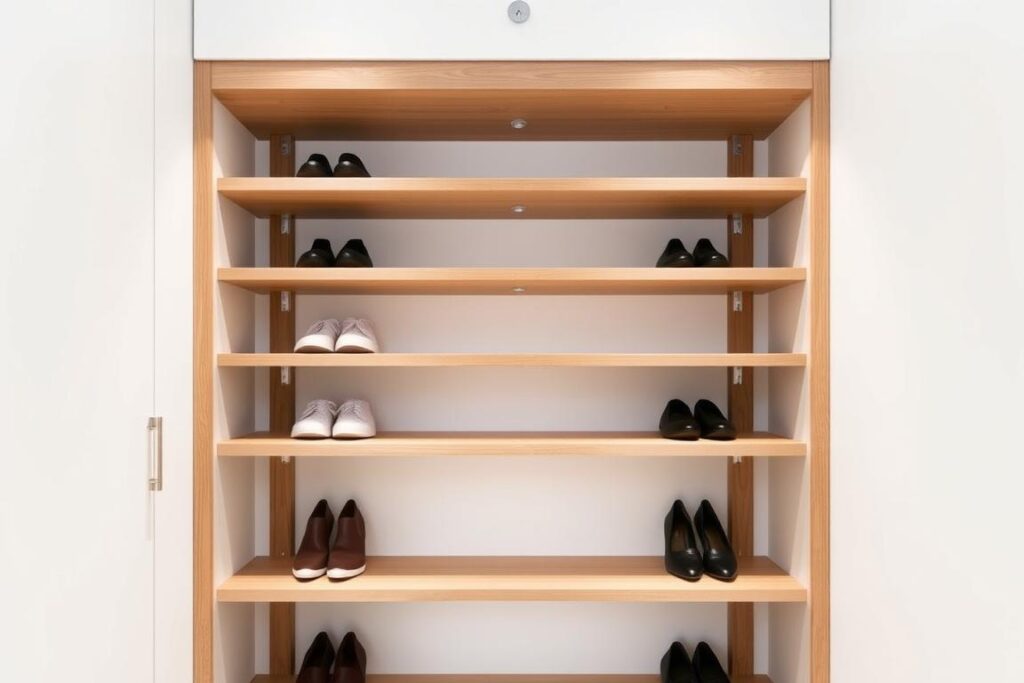
Nightstands and benches that hide storage without eating space
Pick vertical storage over wide footprints. A slim nightstand with drawers or a wall-mounted cubby keeps the floor open; a lift-top bench at the foot of the bed hides blankets and creates a handy seat.
- Nightstands: size the top to your mattress height for easy reach; use soft-close drawers to keep noise down.
- Benches: choose a length near your mattress width but leave at least 24 inches to walk past.
- C-tables: slide in close for a lamp and book, then tuck away after reading.
Need examples of what fits where? Our Murphy bed ideas with desks show how to add function while keeping lanes open. For more minimalist styling cues, see Apartment Therapy’s small bedroom storage tips.
Closet and wardrobe upgrades that multiply capacity
Reconfigure shelves and add modular drawers so every inch works. Small swaps deliver big gains without new construction.
- Modular drawers: shallow for socks, deeper for tees; reconfigure as needs change.
- Shelf dividers: keep stacks tidy at a consistent height.
- Slim wardrobe: anchor to the wall for safety; it adds vertical storage without overpowering the room.
Shopping for safer materials? Scan recognized labels using this bedding certifications overview and a practical non-toxic primer from Healthy House on the Block.
Wall beds with desks for studio or guest-worthy function
A combined wall bed and desk turns a studio into a dual-purpose room. During the day you have a usable desk; at night you fold down a ready bed with everything nearby.
- Manual vs. motorized: manual costs less and can be reliable when tuned; motorized offers convenience.
- Cabinets and towers: store linens and office supplies next to the bed and desk.
- Safety checks: confirm wall studs, locks, and mattress limits before installing.
If you want to explore professional options, compare models and configurations from dedicated makers like California Closets. For a quick overview of duvet vs. comforter (helpful when planning bench space), see Architectural Digest’s guide.
Measure, mock, and match products to access
Quick measurements now save you from blocked drawers later. Use painter’s tape to outline the bed footprint and drawer swing before you buy anything.
- Measure: bed length, under-bed height, distance to walls, and door swing.
- Prevent conflicts: if a wall-side drawer hits a table, switch to a floating shelf or a lift-up base.
- Match use: daily clothes in hard-glide drawers; seasonal bedding in flexible bins.
- Sequence installs: bed first, then nightstands, then wall storage to avoid rework.
- Vetting checklist: capacity, glide quality, corner safety, anchors, finish durability.
“Measure twice, mock once” is a simple rule many pros use to cut returns and wasted time.
FAQ
How much clearance do I need for an under-bed drawer?
Aim for at least the drawer height plus one inch of breathing room. Check skirting or footboards that might reduce usable height.
Are hinge-top beds safe for daily use?
Yes, when installed into studs and used within weight limits. Look for gas lifts or counterbalance hardware and keep hands clear of hinges.
What should I avoid storing under the bed?
Skip fragile heirlooms, liquids, and anything prone to moisture damage. Use sealed bags for textiles and add a small desiccant pack if humidity is high.
Under-bed drawers vs. rolling bins for kids’ rooms?
Drawers guide quick cleanup; rolling bins are lighter and easier for very young kids. Label fronts so they know where items go.
How do I stop drawers from tipping?
Don’t overfill, and avoid pulling fully out on lightweight units. Choose models with stops or add simple rear latches.
Conclusion
Bedroom furniture space saving ideas make every inch count without crowding the room. Start with one zone—under-bed storage, a floating nightstand, or a slim bench—and build from there. Measure first, match products to how often you reach in, and keep surfaces calm for easier nightly resets. For more guides and actionable checklists, explore Cozy Bed Quarters’ storage hub at Cozy Bed Quarters.
Related reading from Cozy Bed Quarters
- Bedroom Storage Hub: Layouts & Checklists
- Floating Nightstands: Clear Floors, Keep Reach
- Wall Shelves for Small Bedrooms

